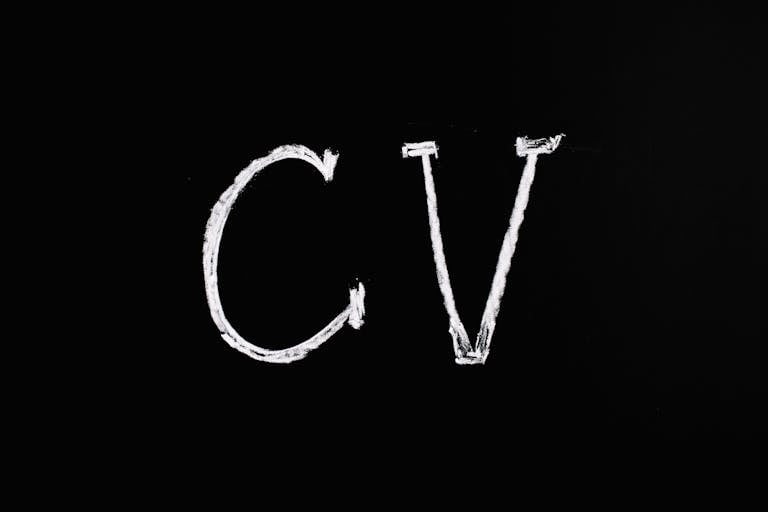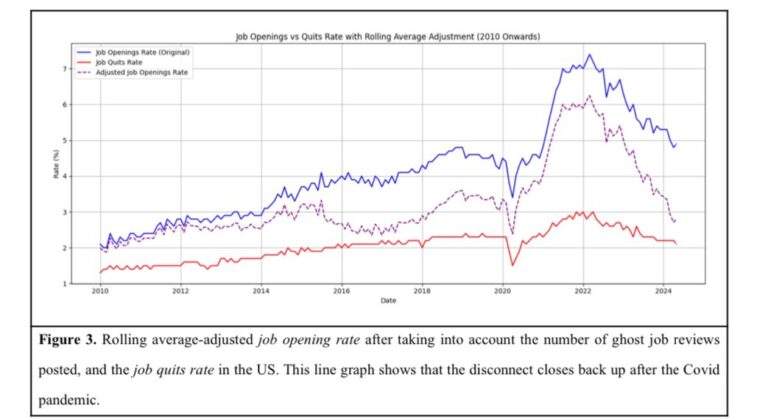Stop Ignoring Government Jobs: The Easy Guide to Applying for Federal Jobs in 2024
Learn how to apply for federal jobs in 2024 with this simple, practical guide. Simplify the process with actionable steps, insider tips, federal resume hacks, and expert advice on GS levels.
Key Takeaways
- Federal job opportunities are booming: Over 30,000 new positions added last month alone in areas like design, marketing, tech, and healthcare.
- Stability, unmatched benefits, and long-term growth: Federal jobs offer perks that outshine most private-sector roles.
- This guide simplifies everything: From finding jobs to crafting a winning federal resume, you’ll have every tool you need to secure a government role.
Introduction: Why You Should Care About Federal Jobs
You might be thinking, “Why should I care about government jobs?”
Let me give you 30,000 reasons—that’s how many federal jobs were added last month alone. These aren’t the stereotypical bureaucratic roles. They’re in-demand positions in areas like:
- Design
- Analytics
- Marketing
- Technology
- Healthcare
Consider this: Over 12% of new jobs in the economy this year were federal positions. That’s more than the construction industry and nearly as much as healthcare. (Source)
Here’s what makes federal jobs unique:
- Job security that private companies simply can’t guarantee.
- Predictable growth paths with structured promotions and raises.
- A competitive pay scale (GS levels) plus benefits that most private-sector jobs can’t touch.
The problem? Most people don’t know how to navigate the federal application process. That’s where this guide comes in.
Why Federal Jobs Are More Popular Than Ever
Federal jobs are gaining traction in 2024, and for good reason.
1. Stability in an Unstable Economy
Layoffs in the private sector are at an all-time high. Federal roles offer consistent paychecks and unmatched stability.
2. Comprehensive Benefits
Federal employees enjoy:
- Healthcare: Affordable insurance that covers employees and families.
- Retirement Plans: Including the Thrift Savings Plan (TSP), a 401(k)-style account with government matching.
- Paid Leave: Generous vacation, sick leave, and federal holidays.
3. Diverse Career Opportunities
Federal jobs aren’t limited to DC or administration. There are roles in nearly every field and location, including remote jobs.
| Aspect | Federal Jobs | Private Sector Jobs |
|---|---|---|
| Job Security | High | Variable |
| Application Process | Detailed and Structured | Often Simplified |
| Career Progression | Well-Defined Paths | Flexible but Unpredictable |
| Benefits | Comprehensive (Healthcare, Retirement) | Varies Widely |
| Work-Life Balance | Generally Encouraged | Depends on Company Culture |
Where to Find Federal Jobs
1. The Official Portal: USAJobs.gov
The majority of federal jobs are posted on USAJobs.gov. It’s the one-stop-shop for government employment.
2. State-Level Portals
Each state has its own government job board. Examples include:
- California: CalCareers
- New York: statejobs.ny.gov
Find your state’s portal by searching “state government jobs [your state].”
3. Local Job Boards
Cities and counties also post job listings. Look up your local portal with keywords like “city jobs” or “county government jobs [your area].”
4. Specialized Portals for Specific Roles
Breaking Down the Federal Hiring Process
Federal job applications aren’t like applying on LinkedIn or Indeed. They’re longer, more detailed, and require patience. But that’s why they’re worth it—most candidates quit halfway.
Step 1: Create an Account on Login.gov
To access USAJobs.gov, you’ll need a Login.gov account.
Step 2: Search for Jobs
Use filters on USAJobs.gov to narrow down roles. Start with:
- Keyword searches: Use specific titles like “Tax Analyst” or “Cybersecurity Specialist.”
- Location: Find roles in your desired area or remote jobs.
- Pay Grade (GS Level): Focus on levels that match your experience.
Step 3: Analyze Job Postings Carefully
Federal job postings can feel like a wall of text, but here’s what you need to focus on:
1. Qualifications Section
This outlines the exact experience and skills required. Pay attention to phrases like:
- “Specialized experience includes…”
- GS levels, such as “GS-12 level experience.”
If a job says, “Experience leading a team in XYZ,” tailor your resume to reflect that.
2. Required Documents Section
This lists everything you need, such as:
- Transcripts for education-based qualifications.
- Veteran preference forms (if applicable).
- Certifications or licenses.
Step 4: Build a Federal Resume That Stands Out
A federal resume isn’t your typical one-pager. It’s detailed, often 3–5 pages, and formatted differently.
How to Build Your Federal Resume
- Be Comprehensive: Include every responsibility and accomplishment from your past jobs. Even small details matter.
- Match Keywords: Use language from the job description throughout your resume.
- List Education Details: Include GPAs, credit hours, and coursework.
- Quantify Achievements: For example, “Led a team of 10 to increase efficiency by 20%.”
Sections to Include
- Work Experience
- Be exhaustive. Include every task, no matter how small.
- Use keywords from the job description.
- Education
- List all degrees, coursework, GPAs, and credit hours.
- Include relevant coursework descriptions.
- References
- If optional, it’s still a good idea to include them.
- Personal Information
- Include citizenship status, last four digits of your SSN, and veteran’s preference status.
- Objective Statement
- Clearly state the role you’re applying for and how you can contribute.
- Other Qualifications
- List certifications, awards, and memberships.
- Languages
- Specify proficiency levels in reading, writing, and speaking.
- Additional Information
- Add security clearances, willingness to travel, and schedule preferences.
Use the USAJobs.gov resume builder to ensure compliance.
Step 5: Upload Required Documents
Here’s what you might need:
- Resume (already built in Step 4).
- Transcripts: For undergraduate and graduate degrees.
- Veteran Forms: DD-214 and VA letters (if applicable).
- SF-50: Required for current or former federal employees.
Step 6: Complete the Assessment
Federal applications often include a multiple-choice assessment. This determines your qualification level:
- Best Qualified: Top candidates.
- Well Qualified: Meets most criteria.
- Qualified: Meets minimum criteria.
Pro Tip
Reference your resume to confidently select the highest answers you can justify.
Step 7: Submit Your Application
Double-check everything. Missing documents or errors can disqualify your application. Submit, then monitor your application status on USAJobs.gov.
Step 8: Follow Up If Necessary
If you haven’t heard back in 2-3 weeks, don’t hesitate to reach out to the HR representative listed in the job posting.
Setting Up Job Alerts
Step 9: Stay Ahead of the Game
Set up email alerts on USAJOBS to receive new postings daily. This keeps you in the loop and allows you to apply as soon as new positions open.
How to Set Up Alerts
- Go to your USAJOBS account settings.
- Create saved searches with your preferred criteria.
- Opt-in for daily or weekly email notifications.
Understanding GS Levels and Pay
Federal jobs use the General Schedule (GS) to classify positions by pay and responsibility.
| GS Level | Experience/Education | Starting Salary |
|---|---|---|
| GS-5 | Bachelor’s Degree | ~$40,000/year |
| GS-7 | Bachelor’s + Some Experience or Master’s | ~$50,000/year |
| GS-12+ | Extensive Work Experience/Advanced Degree | ~$80,000+/year |
Higher GS levels (GS-13 to GS-15) are typically reserved for senior or specialized roles. Learn more here.
Specialized Opportunities in Federal Hiring
The federal government has unique hiring paths for specific groups:
1. Students and Recent Graduates
- Internships: intern.usajobs.gov
- Recent Graduates Program: here
2. Veterans and Military Spouses
Veterans get preference points in hiring. Explore their options here.
3. Senior Executives
Senior Executive Service: Learn more here.
4. Individuals with Disabilities
If you’re an individual with a disability, you can apply and compete for any job for which you are eligible & meet the qualifications, and schedule a hiring authority.
Common Mistakes to Avoid
Skipping Required Documents
- Always double-check the “Required Documents” section.
Vague Descriptions in Resume
- Be specific and detailed in your resume entries.
Missing Application Deadlines
- Federal jobs have strict deadlines. Mark your calendar!
Common FAQs About Federal Jobs
1. Is prior government experience necessary to apply for federal jobs?
Nope! While some positions may require specific experience, many federal jobs are open to individuals from the private sector. Be sure to read the qualifications section carefully.
2. How long does the federal hiring process take?
It can vary, but generally expect 2-3 weeks for initial feedback. The entire process might take a few months, so patience is key.
3. Can I negotiate my salary for a federal job?
Federal jobs have fixed pay scales (GS levels). While there’s limited room for negotiation, certain factors like location and experience can influence your starting step within a GS level.
4. What is Veterans’ Preference, and how does it affect my application?
Veterans’ Preference gives eligible veterans priority in federal hiring. If you’re a veteran, learn more here.
5. Do I need a security clearance to apply?
Not necessarily. Some positions require security clearances, but many do not. If a clearance is needed, it will be stated in the job posting.
6. Can I apply if I’m not a U.S. citizen?
Federal jobs typically require U.S. citizenship. However, some positions may be open to non-citizens. Check the “Who May Apply” section in the job posting.
Conclusion: Federal Jobs Are Worth It
Federal jobs are one of the most secure and rewarding career paths in 2024. They offer stability, great pay, and unmatched benefits—but the application process requires effort.
Here’s the good news: With this guide, you have everything you need to navigate the system. Start today, and land the federal job you deserve.
Talk Resumes with Wealth Waggle
Perfect your resume with AI-assisted feedback and tips (using the latest recruiting intelligence).









